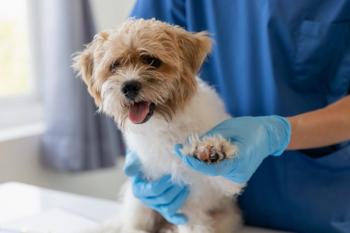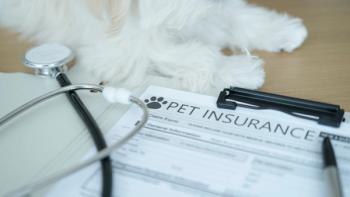
Focus on veterinary wellness care could be "dangerous," says Purdue expert
Digging into new data from the Nationwide Purdue Veterinary Price Index, a Purdue associate dean says "it's dangerous to build a practice on wellness services," not medical services.
The federal government's method of calling a handful of veterinary practices for pricing data isn't as robust as the Nationwide Purdue Veterinary Price Index, which draws from more than 6 million pet health insurance claims from 2009 now through July 2015. Above, you can see the estimated price increases of veterinary products and services on three lines: the rising red line (the U.S. Consumer Price Index for Veterinary Services Pricing) at 24.6%, the green line (the CPI for all consumer prices) at 12.2% and the blue line (Nationwide) at 0.1% price growth over 6.5 years. (Source: Nationwide)Veterinary prices have gone up from 2009 to 2015-especially in the first six months of last year-but not as much as the federal government says. That was the takeaway from a presentation and lively discussion of the newest data from the Nationwide Purdue Veterinary Price Index at the NAVC Conference last month in Orlando, Florida.
A new refresh of prices drawn from more than 6 million pet health insurance claims showed modest increases for January to June 2015:
> A 3.8 percent price increase for well-care treatments (vaccines, physical exams, fecal and heartworm tests, etc.)
> A 5.6 percent price increase for medical treatments (otitis externa, dermatitis, pyoderma, gastritis, osteoarthritis, etc.)
That was good news to the ears of practice owners, practice management consultants, industry insiders and reporters in attendance. Many veterinary practice owners nationwide have been patiently waiting to see veterinary pricing rise again after the recession and subsequent slow recovery. But the highlight of the presentation was an exchange between the presenter-Logan Jordan, associate dean at Purdue University's Krannert School of Management-and a circumspect audience member, who called on Jordan to explain what the data meant for private veterinary practitioners right now.
(Source: Nationwide)While acknowledging that his theory was just a theory, Jordan pointed at the difference in wellness care pricing vs. medical care pricing-not in the six-month period, but from 2009 through June 2015:
> A 12 percent increase in well-care prices
> A 3.3 percent drop in medical care prices
“Clients are paying less for the services that veterinarians go to school to provide,” Jordan said, referring to such common pet health insurance claims as otitis externa, dermatitis, pyoderma, gastritis and osteoarthritis.
However, he continued, veterinarians are charging more for products and services such as vaccines and simple tests that can easily move from full-service veterinary hospitals into online pharmacies, mobile vaccination clinics and perhaps, one day, tiny clinics in human pharmacies.
“Because [many wellness services] are commodities, it's dangerous to build a practice on them,” Jordan said. “This is the aspect of the business most at risk, and this is where prices are up [from 2009 to 2015].”
The study's next refresh will be presented in August at the AVMA Convention in San Antonio.
Newsletter
From exam room tips to practice management insights, get trusted veterinary news delivered straight to your inbox—subscribe to dvm360.






